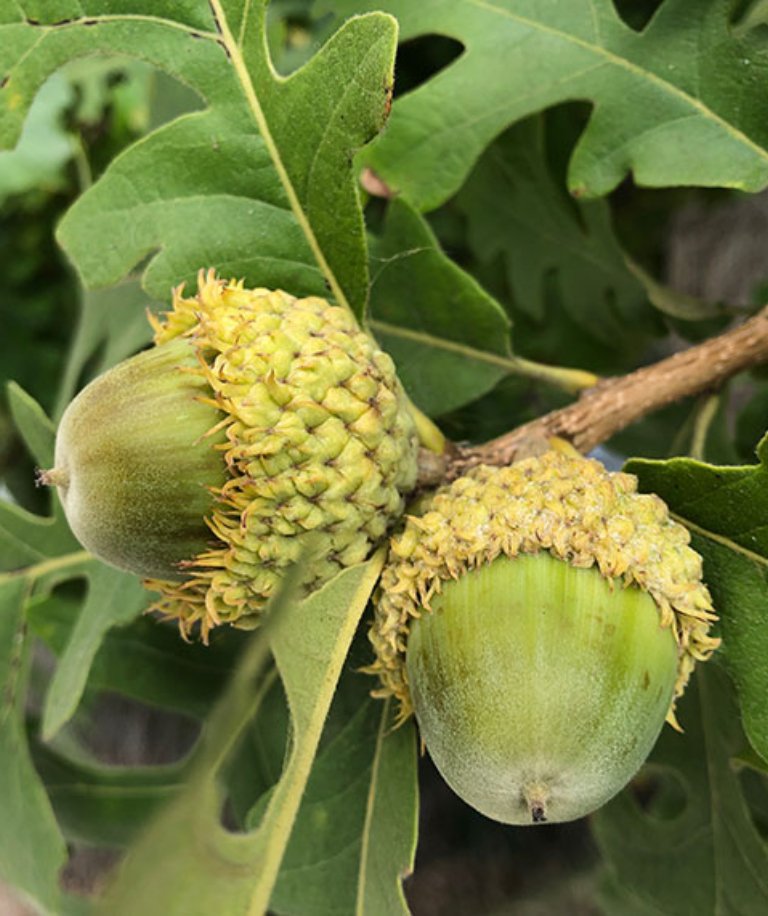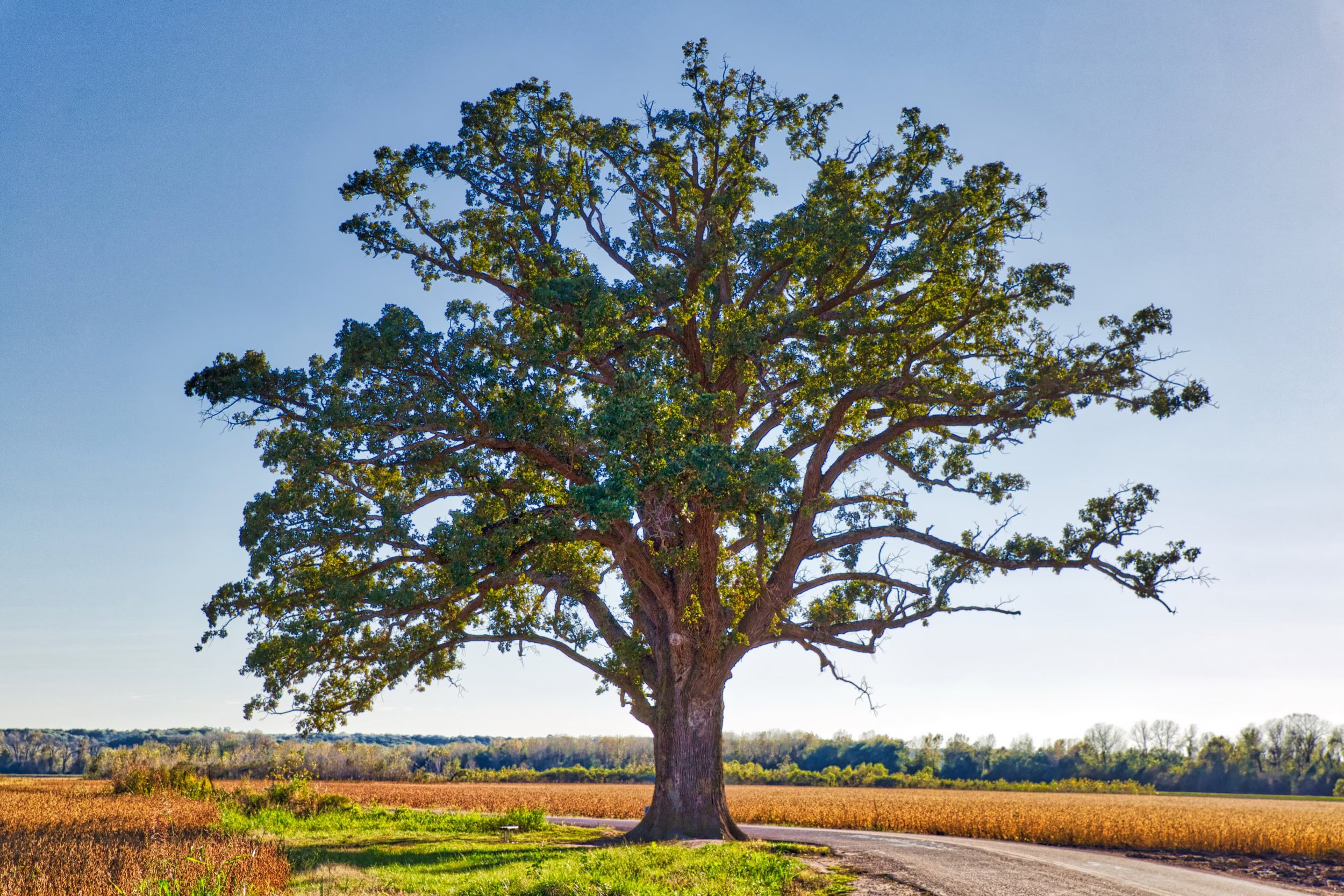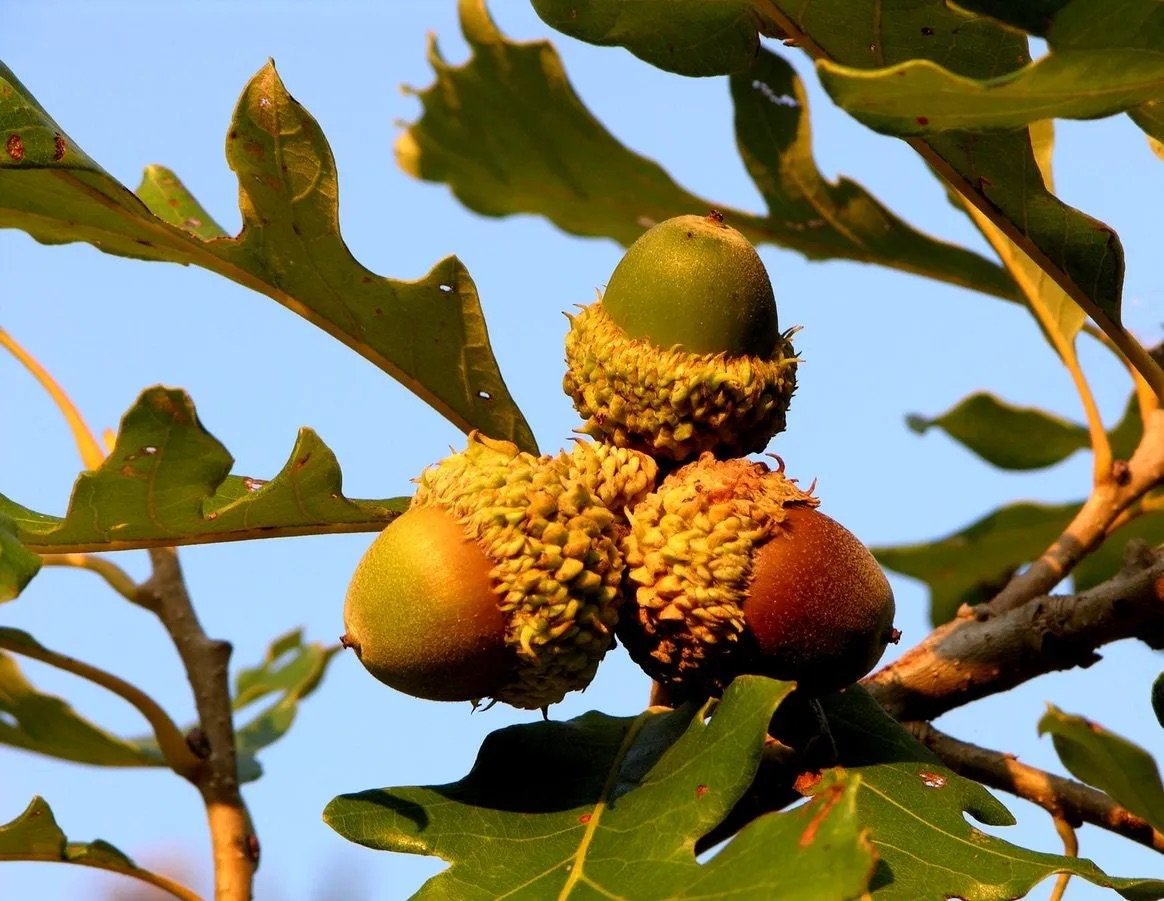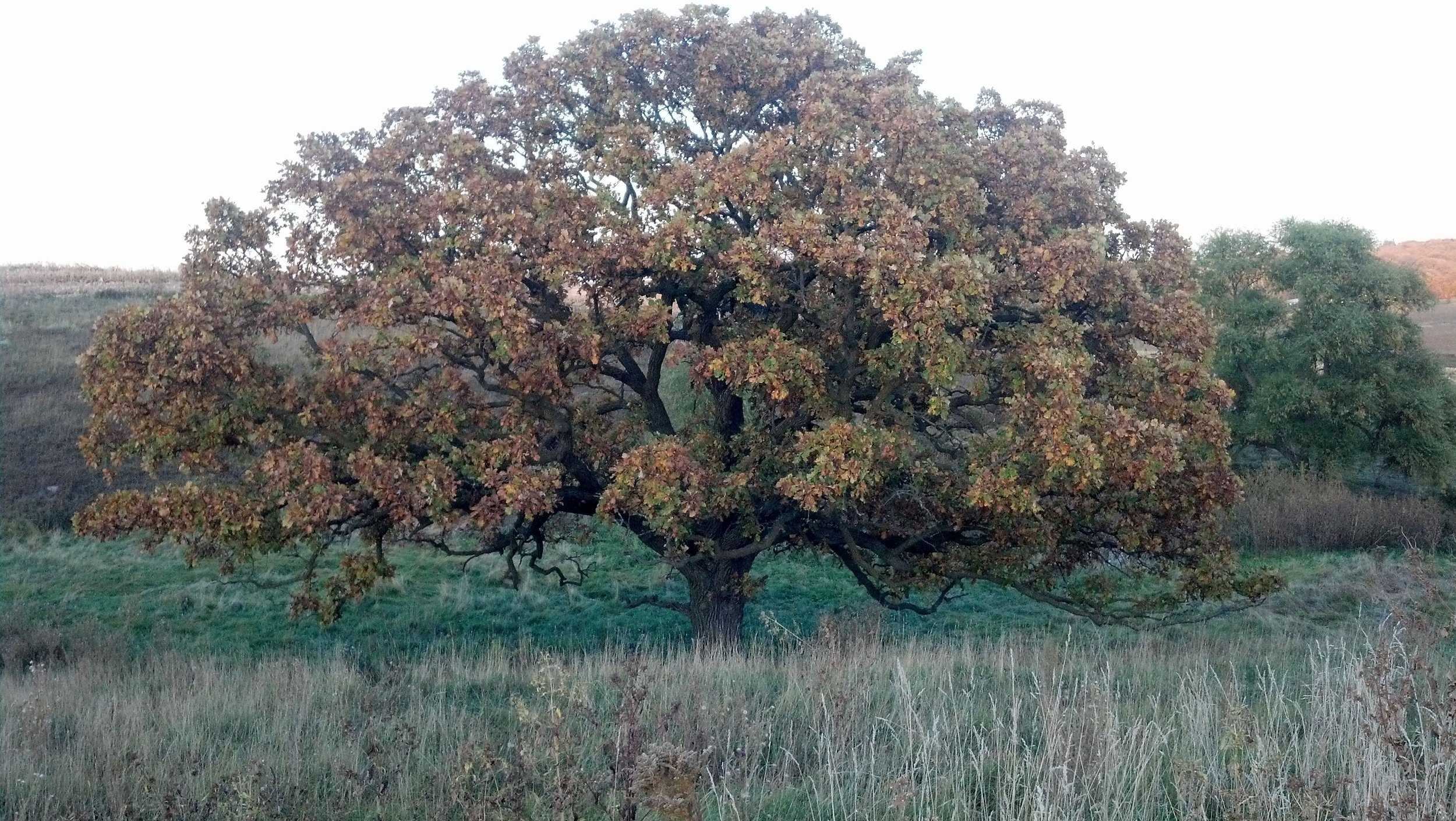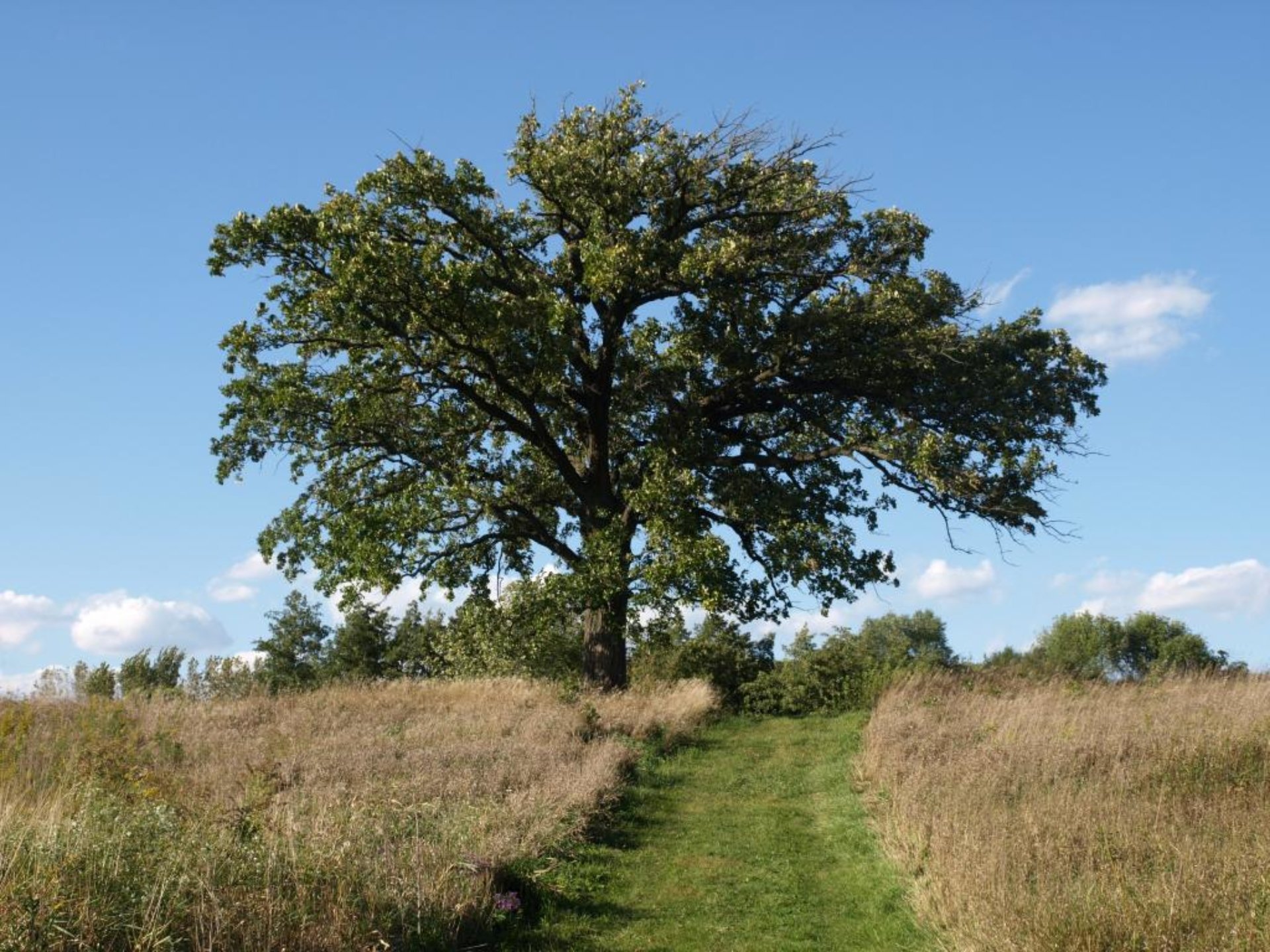Burr Oak
Quercus macrocarpa. The burr oak (or bur oak), is native to eastern North America and part of the white oak group. It is also known as mossycup oak, mossycup white oak, blue oak, or scrub oak. The acorns are the largest of any North American oak and are important food for wildlife. Like other white oaks, the acorns are low-tannin, can be used in a number of culinary ways, and were a staple crop of Native Americans.
Burr oaks primarily grow in a temperate climate in the oak–hickory forested regions in the United States and into Canada.It is commonly found in the open, away from dense forest canopy. For this reason, it is an important tree on the eastern prairies, often found near waterways in otherwise more forested areas, where there is a break in the canopy. Larger burr oaks, are fire-tolerant because of their thick bark. These are a common tree of the historic is the oak savanna, where fires often occurred in early spring or late fall. Without fires, bur oak is often succeeded by other tree and shrub species that are more shade-tolerant.
This is a large deciduous tree growing up to 100 FT, rarely 150, and is one of the most massive oaks with a trunk diameter of up to 10 FT. Burr oaks commonly live to be 200 to 300 years old, and may live up to 400 years. The bark is gray with distinct vertical ridges. Plant in full sun in well-drained soil. This tree is adaptable to many soils and drought tolerant once established.
Sold as bare root trees AVG 24” tall.
Quercus macrocarpa. The burr oak (or bur oak), is native to eastern North America and part of the white oak group. It is also known as mossycup oak, mossycup white oak, blue oak, or scrub oak. The acorns are the largest of any North American oak and are important food for wildlife. Like other white oaks, the acorns are low-tannin, can be used in a number of culinary ways, and were a staple crop of Native Americans.
Burr oaks primarily grow in a temperate climate in the oak–hickory forested regions in the United States and into Canada.It is commonly found in the open, away from dense forest canopy. For this reason, it is an important tree on the eastern prairies, often found near waterways in otherwise more forested areas, where there is a break in the canopy. Larger burr oaks, are fire-tolerant because of their thick bark. These are a common tree of the historic is the oak savanna, where fires often occurred in early spring or late fall. Without fires, bur oak is often succeeded by other tree and shrub species that are more shade-tolerant.
This is a large deciduous tree growing up to 100 FT, rarely 150, and is one of the most massive oaks with a trunk diameter of up to 10 FT. Burr oaks commonly live to be 200 to 300 years old, and may live up to 400 years. The bark is gray with distinct vertical ridges. Plant in full sun in well-drained soil. This tree is adaptable to many soils and drought tolerant once established.
Sold as bare root trees AVG 24” tall.
Quercus macrocarpa. The burr oak (or bur oak), is native to eastern North America and part of the white oak group. It is also known as mossycup oak, mossycup white oak, blue oak, or scrub oak. The acorns are the largest of any North American oak and are important food for wildlife. Like other white oaks, the acorns are low-tannin, can be used in a number of culinary ways, and were a staple crop of Native Americans.
Burr oaks primarily grow in a temperate climate in the oak–hickory forested regions in the United States and into Canada.It is commonly found in the open, away from dense forest canopy. For this reason, it is an important tree on the eastern prairies, often found near waterways in otherwise more forested areas, where there is a break in the canopy. Larger burr oaks, are fire-tolerant because of their thick bark. These are a common tree of the historic is the oak savanna, where fires often occurred in early spring or late fall. Without fires, bur oak is often succeeded by other tree and shrub species that are more shade-tolerant.
This is a large deciduous tree growing up to 100 FT, rarely 150, and is one of the most massive oaks with a trunk diameter of up to 10 FT. Burr oaks commonly live to be 200 to 300 years old, and may live up to 400 years. The bark is gray with distinct vertical ridges. Plant in full sun in well-drained soil. This tree is adaptable to many soils and drought tolerant once established.
Sold as bare root trees AVG 24” tall.

